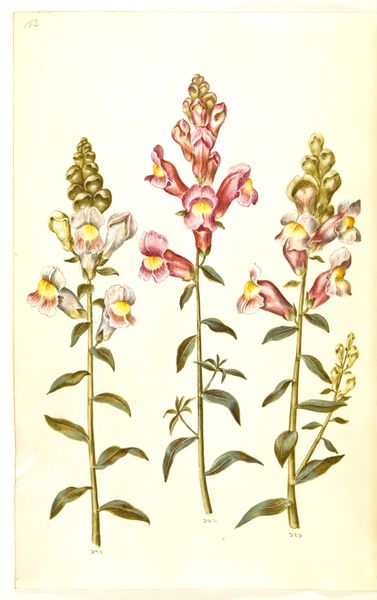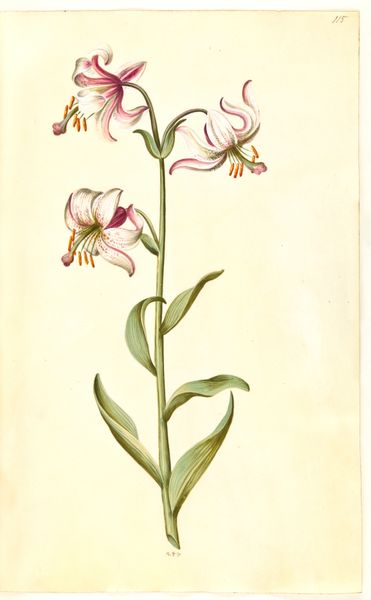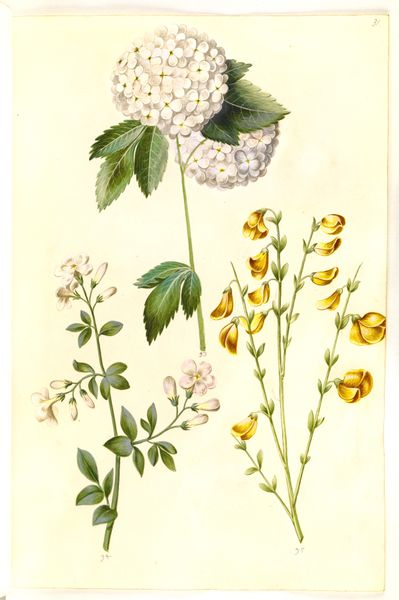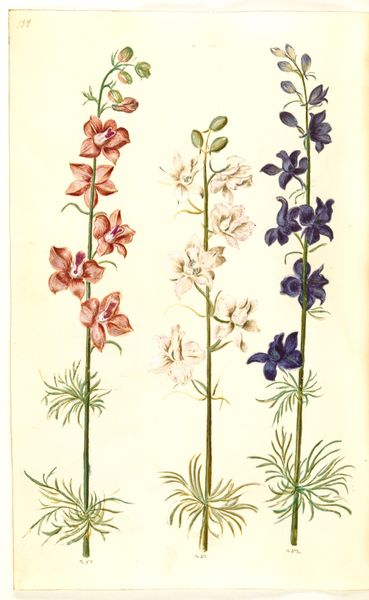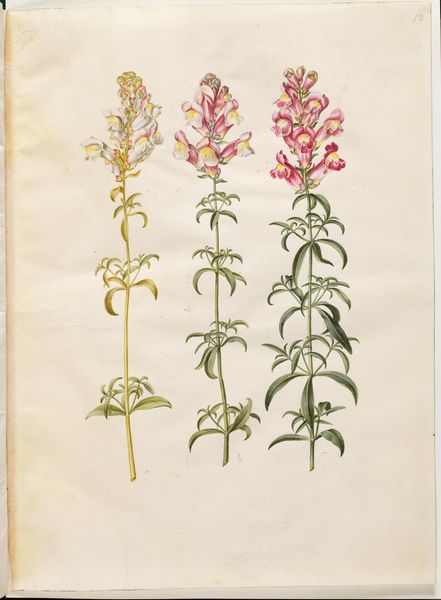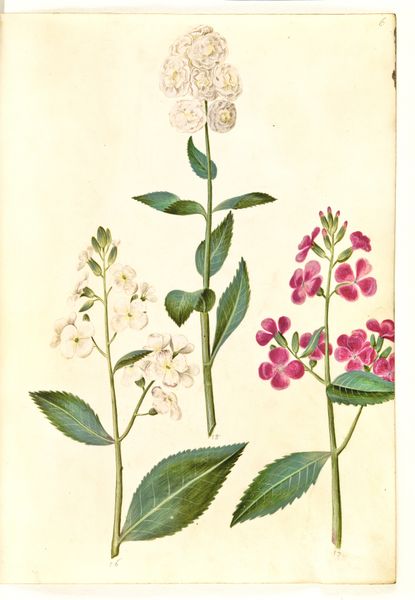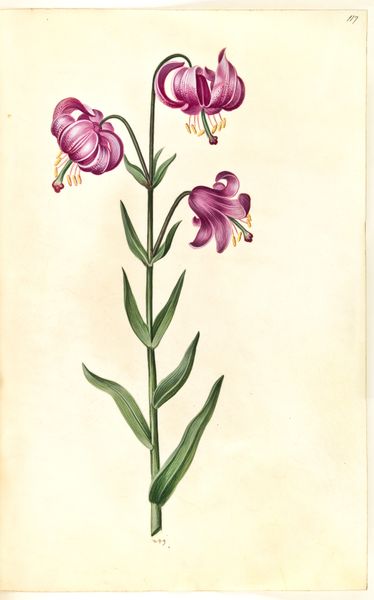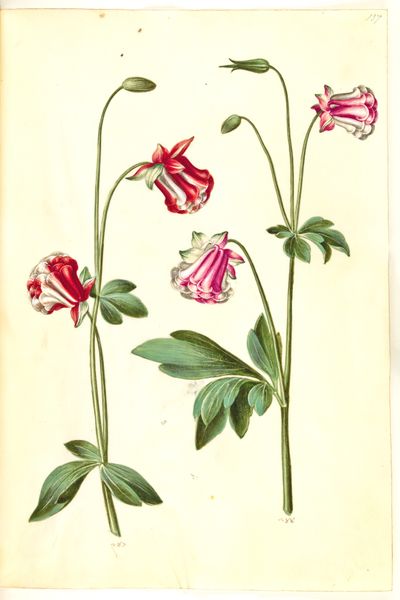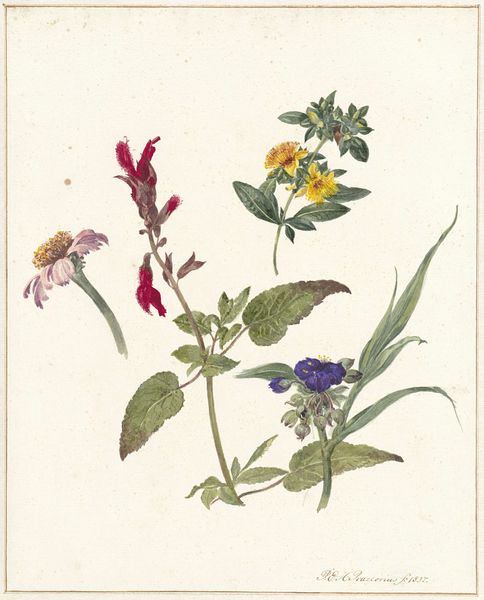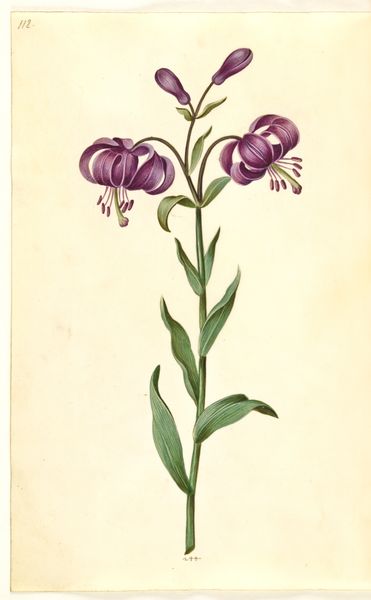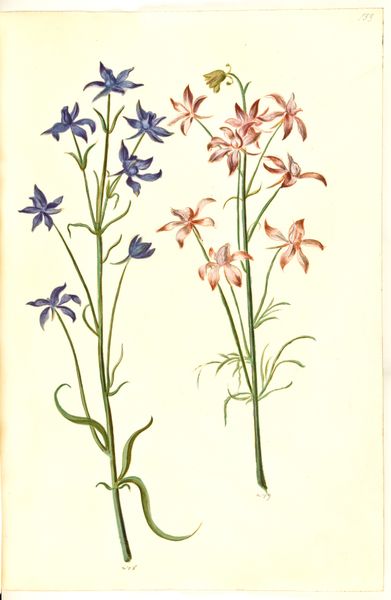
Digitalis purpurea (almindelig fingerbøl); Digitalis grandiflora (storblomstret fingerbøl) 1635 - 1664
0:00
0:00
drawing, tempera, gouache
#
drawing
#
tempera
#
gouache
#
11_renaissance
#
northern-renaissance
#
botanical art
Dimensions: 375 mm (height) x 265 mm (width) x 85 mm (depth) (monteringsmaal), 358 mm (height) x 250 mm (width) (bladmaal)
Hans Simon Holtzbecker rendered these watercolors of Digitalis purpurea and grandiflora, commonly known as foxgloves, sometime before his death in 1671. The foxglove, with its bell-shaped blossoms, carries a dual symbolism deeply rooted in folklore and practical application. The name "foxglove" itself hints at ancient associations with the animal world. "Folk's-gloves"—the gloves of the "little people"—connects us to the realm of fairies and hidden knowledge, while the flower's potent medicinal properties, specifically as a source of digitalis for treating heart conditions, remind us of the ambiguous power of nature: to heal and to harm. Consider the mythical figure of the witch, who brews potions with plants of this kind. The image of the foxglove has undergone various transformations across time, appearing in diverse contexts from botanical illustrations to allegorical artworks. It resurfaces time and again, its symbolism enriched by new cultural interpretations and scientific understanding. Its very form—towering, elegant, yet subtly menacing—engages our collective memory and subconscious fears.
Comments
No comments
Be the first to comment and join the conversation on the ultimate creative platform.
